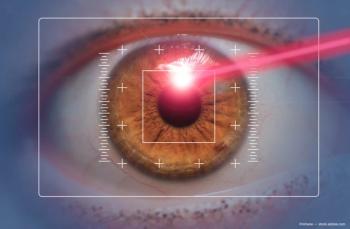
Health officials report on Fusarium keratitis outbreak
The 164 confirmed cases of Fusarium keratitis in 33 states and one U.S. territory were due to the use of Bausch & Lomb Inc.’s ReNu with MoistureLoc contact lens solution, according to a report by the Fusarium Keratits Investigation Team in the Journal of the American Medical Association (JAMA) (2006; 296:953-963). The team went on to discourage contact lens users from using that product.
The 164 confirmed cases of Fusarium keratitis in 33 states and one U.S. territory were due to the use of Bausch & Lomb Inc.’s ReNu with MoistureLoc contact lens solution, according to a report by the Fusarium Keratits Investigation Team in the Journal of the American Medical Association (JAMA) (2006; 296:953-963). The team went on to discourage contact lens users from using that product.
Investigators said 10 different Fusarium species were identified among 39 tested isolates. They added that the bacteria was not found in the factory, warehouse, solution filtrate, or unopened solution bottles, and the implicated lots were not clustered in time.
“We think the report confirms that Bausch & Lomb took the right action in the interest of consumer health and safety by recalling the MoistureLoc product, and that Bausch & Lomb can contribute to recommend its ReNu MultiPlus solution with confidence,” said Bausch & Lomb in an issued statement. “Our intense and extensive investigation into the Fusarium situation, combined with scientifically rigorous independent reports such as the CDC’s, has produced an exceptional body of valuable intellectual property that we will use to develop new and innovative products to meet the needs of consumers and eye-care practitioners.”
The company added that it is working with eye-care practitioners to launch a new Wear & Care Program to inform contact lens wearers about proper care of their eyes and lenses.
In related news, IntraLase Corp. is offering free corneal transplantation with the IntraLase FS laser to patients infected with Fusarium keratitis. Four centers will provide the laser-enabled corneal transplant procedures: The Corneal Research Foundation of America in Indianapolis, The University of California-Irvine’s department of ophthalmology, Slade and Baker Vision Center in Houston, and Laser Eye Consultants of Boston.
The JAMA article reported that corneal transplantation was required in 55 of the confirmed cases, but it’s not clear if any of these transplantations used the IntraLase laser.
Newsletter
Don’t miss out—get Ophthalmology Times updates on the latest clinical advancements and expert interviews, straight to your inbox.
















































.png)


